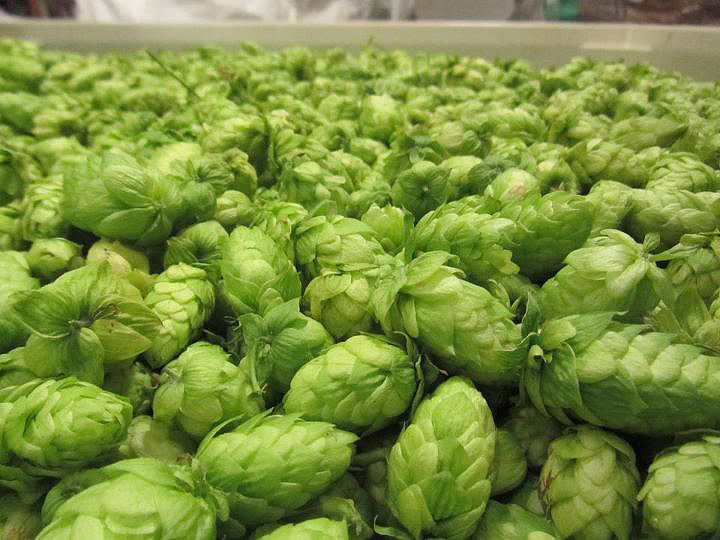The Fresh-Hop Phenomenon

Dry your eyes, brew believers. Sure, the summer beer festivals have folded up their tents and craft brewers are finished with light, fruity, warm-weather beers, and the muscular winter ales are probably still stewing in the barrel. It’s entirely possible your beer-loving heart may feel a little empty, but fear not! The early days of autumn bring with them an opportunity to sample something unique and wonderful—namely, fresh-hop beers, and the attendant brew fests held in their honor.
“Fresh-hop beer? What’s so cool about fresh-hop beer? Don’t all beers use fresh hops?” you may wonder. The answer is pretty simple. Hops are literally a delicate flower. If you don’t do something with them right after they’re plucked they’re liable to wilt or mould. This is why hops are typically kiln-dried immediately after harvest. The dried hops not only buy the brewer some time, but the flavor profile can be more accurately gauged by determining acid content and overall quality.
According to Charlie Hutchins, head brewer at Rock Bottom Brewing, the use of fresh hops right off the vine turns the brewing process into a box of Forrest Gump-brand chocolates: “You’re going straight from picking them to brewing them, so you never know what you’re going to get,” he says. And because the window for harvesting is relatively small, it makes fresh-hop flavors a bit more unpredictable, which is incentive indeed, especially to a dedicated hop head searching for new kicks. Upcoming festivals such as Hood River Hops Fest and Portland Fresh Hops Fest have been around for a while, but in the past few years they have grown in scope, as more and more brewers have seen fit to participate in this seasonal brewing phenomenon that celebrates harvest-time with the freshest, greenest hops available. But how do they really taste?
APEX beer bar on SE Division Street has three varieties currently on tap, including the newly released Burnside Fresh Hop Sterling (nitro), Alameda Brewing’s Failing IPA, and the Laurelwood Fresh Hop Free Range Red.
Burnside’s Sterling (named for the hop that flavors it) is an ESB, sharp, bitter, and buoyant—rather like a Czech-style pilsner—that's balanced by the creamy qualities imparted by the blast of CO2 from the nitro. There is a distinct taste of resinous vegetation here, more so than in your average pint. By contrast, Laurelwood’s beer is very floral in nose and mouth, like drinking a bouquet, if such a thing were possible. It’s a full-bodied, honeyed, and lively pour, the hops still bursting with recent bloom.
Rock Bottom’s Fresh Hop IPA has a similarly vibrant profile to the Burnside Sterling, with the wet, amped-up hop bitterness delivering more impact and lingering much longer on the palate. It's like when chefs use truffles to make the flavor of dishes really pop. The fresh hops really make the flavor notes more intense and prominent. Is it possible for a beer to be juicier?
Now that you have an inkling of what's in store, hop on down to your local pub or brew festival and sample hoppy goodness straight off the vine.
Hood River Hops Festival, Sept 29
